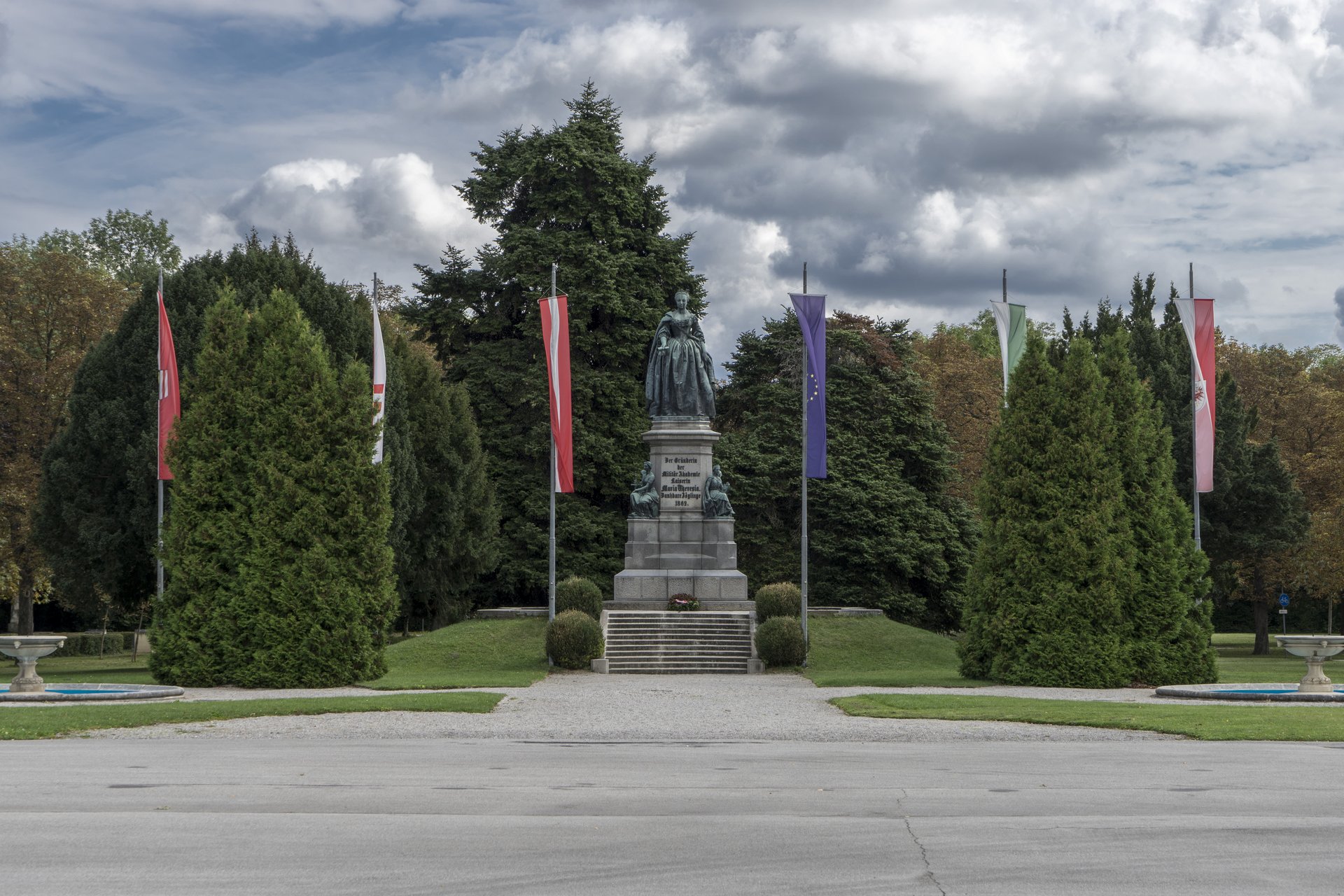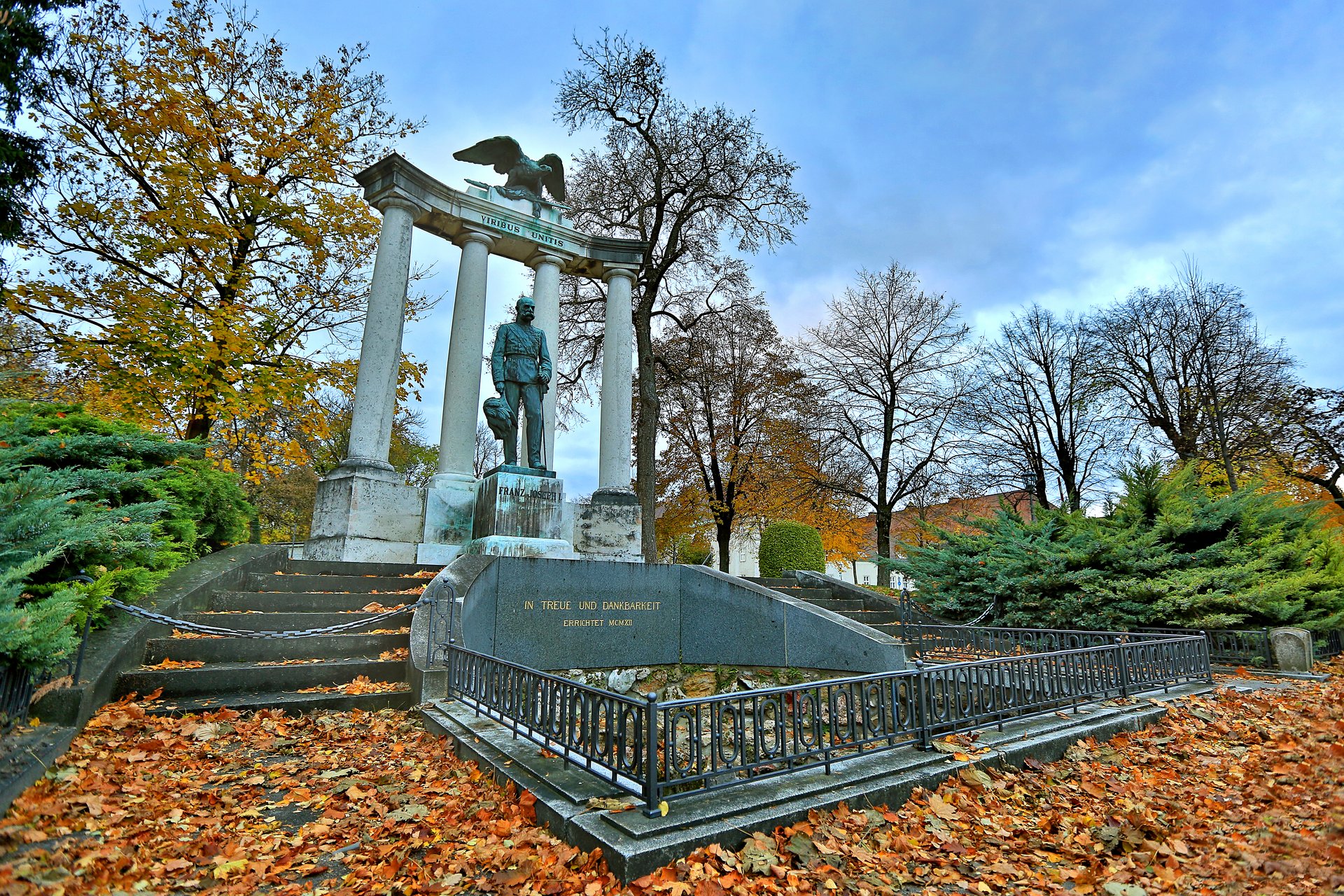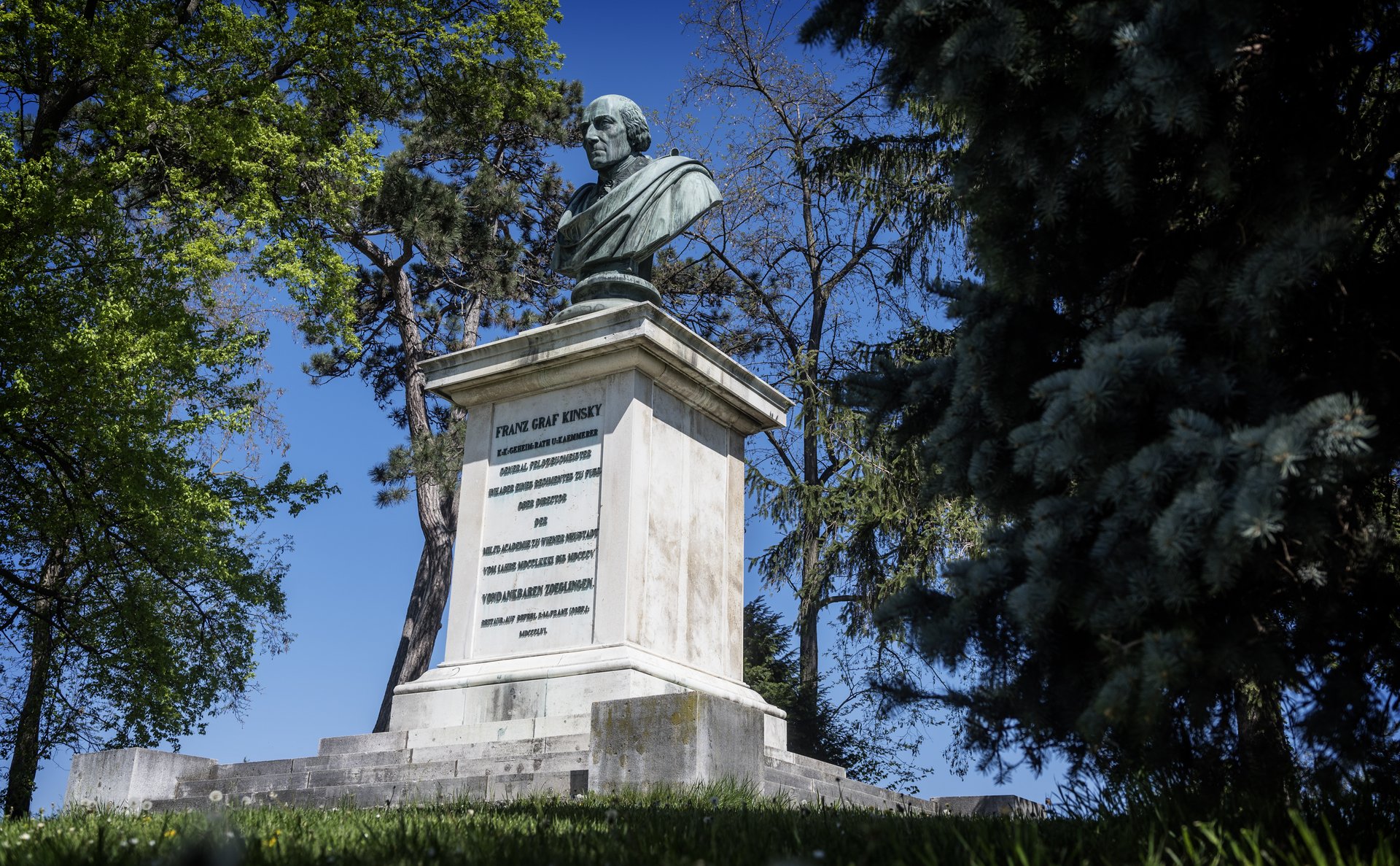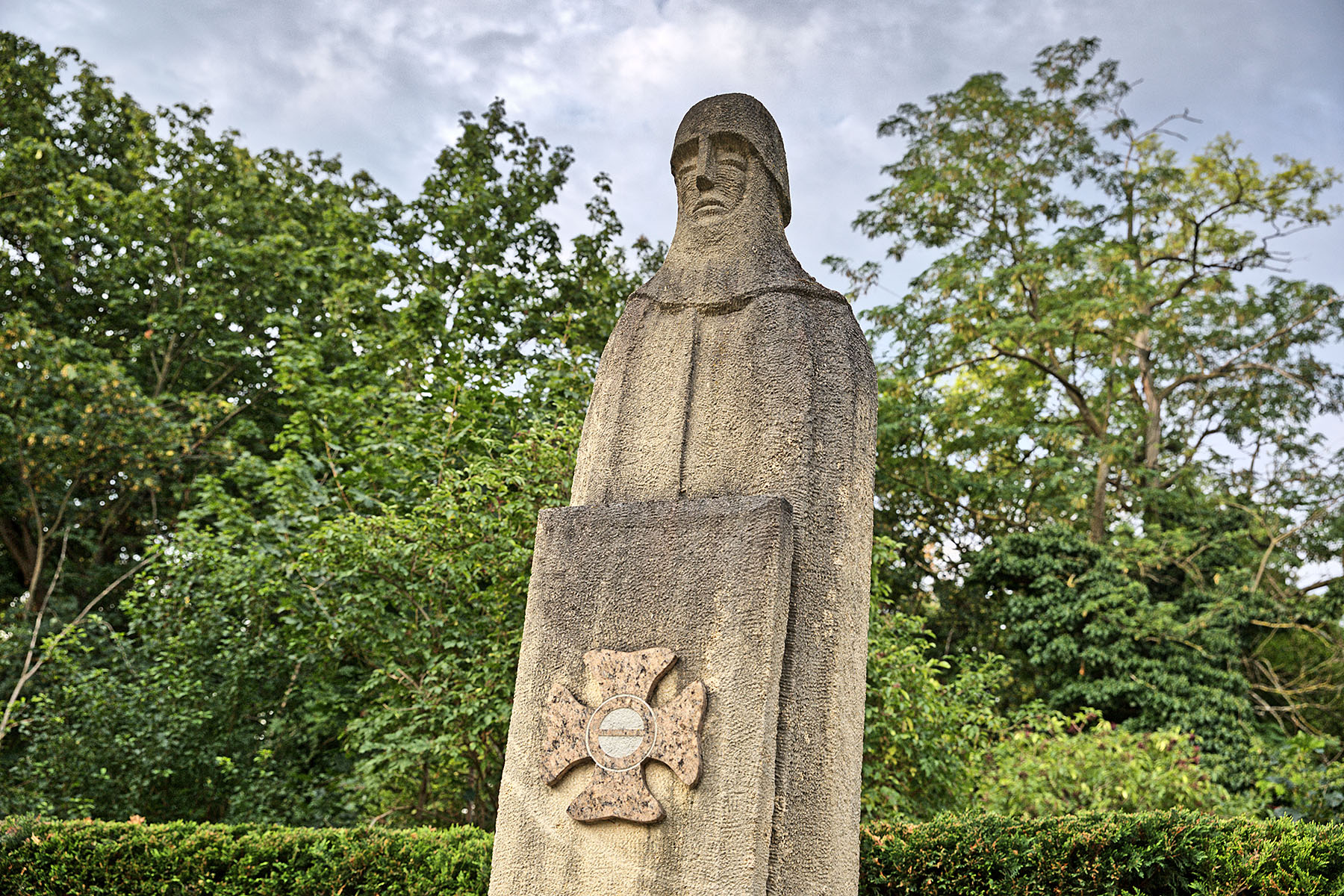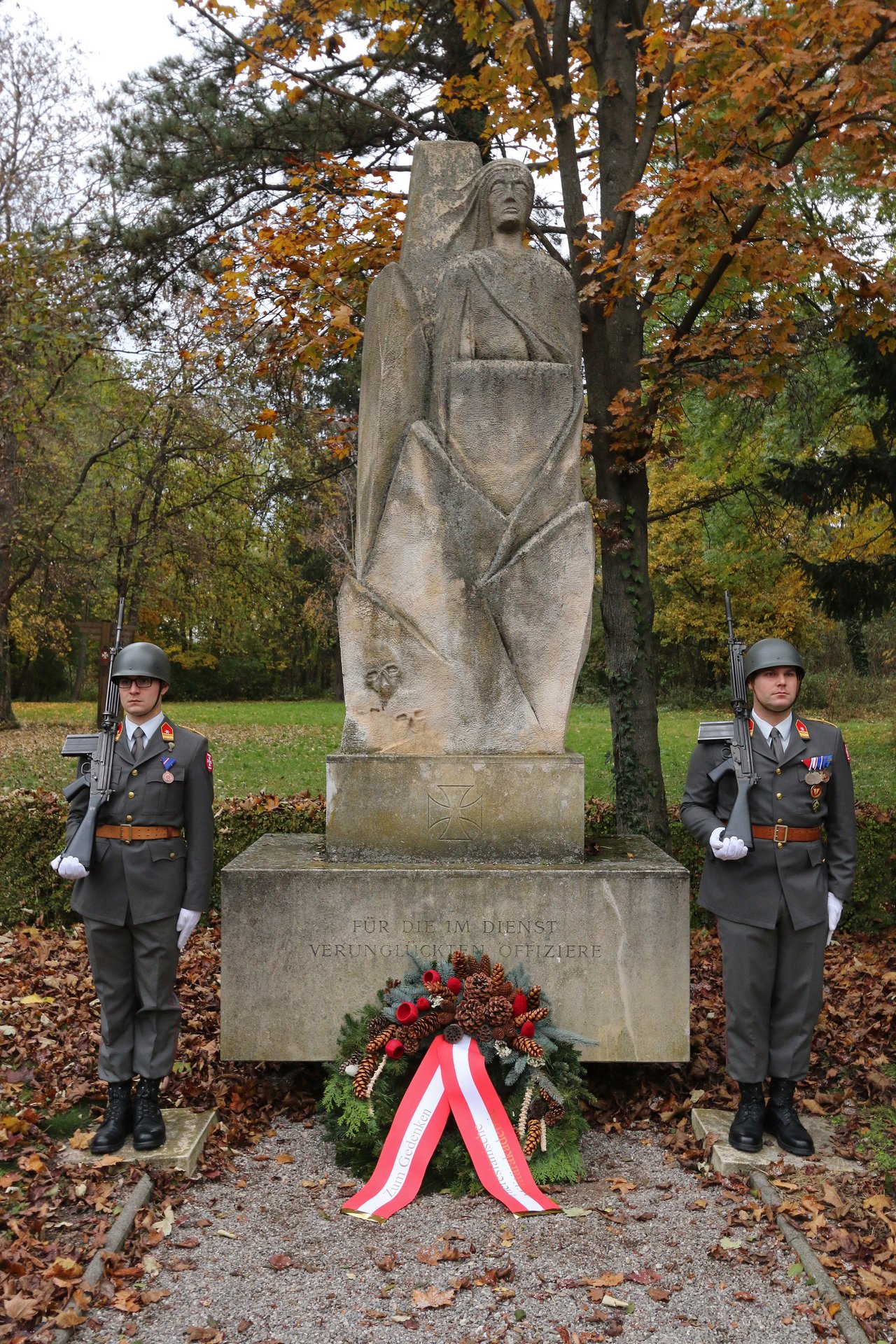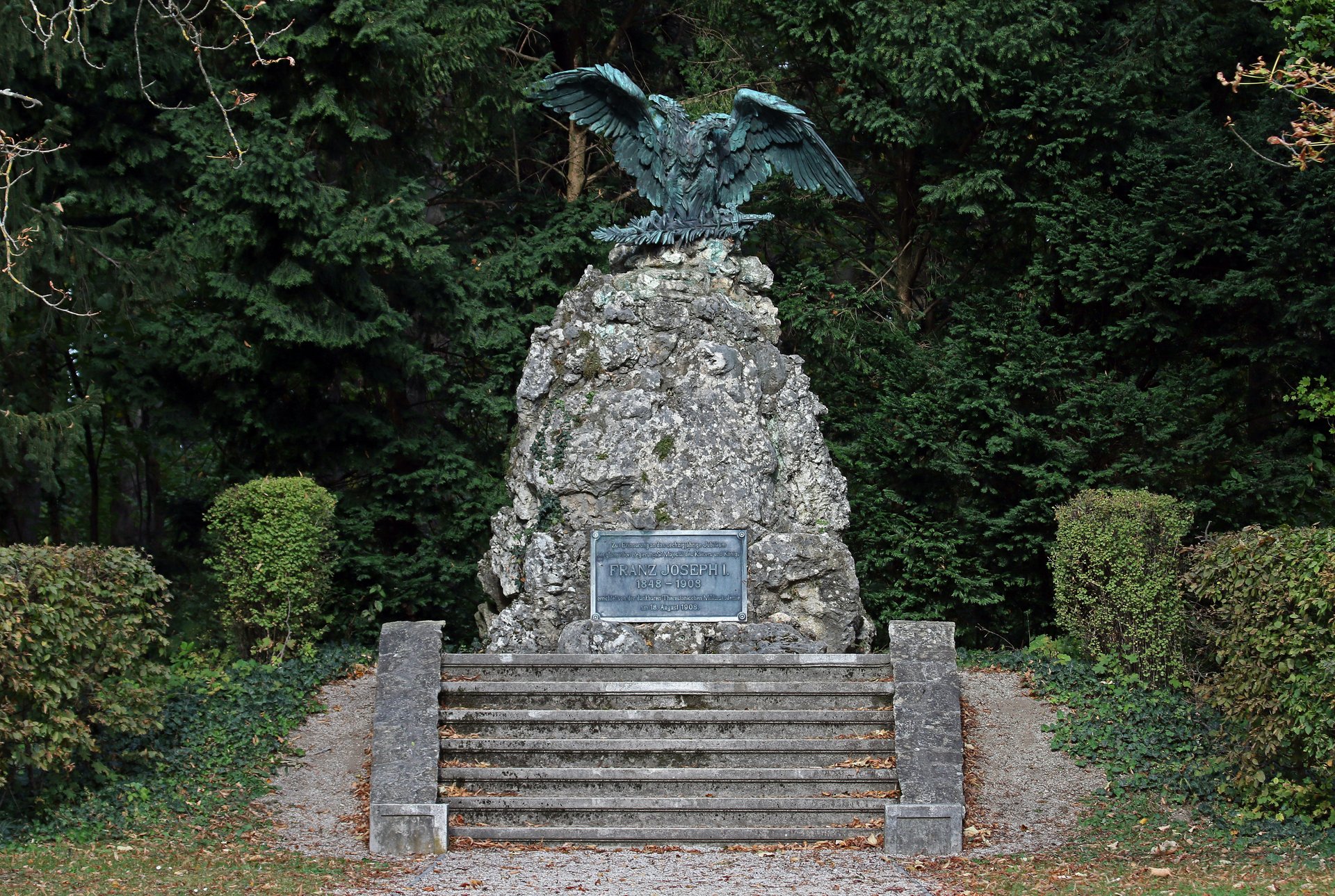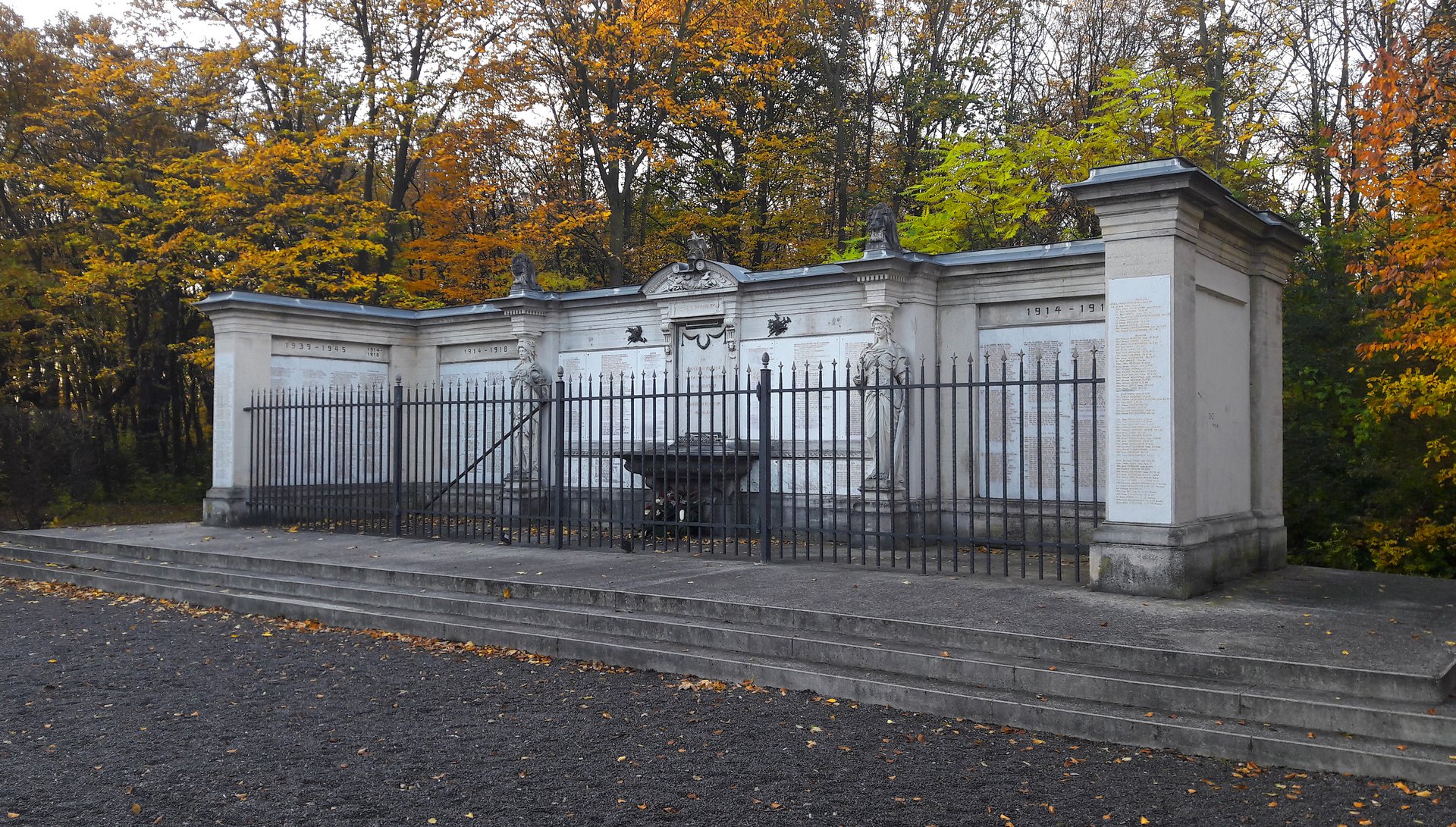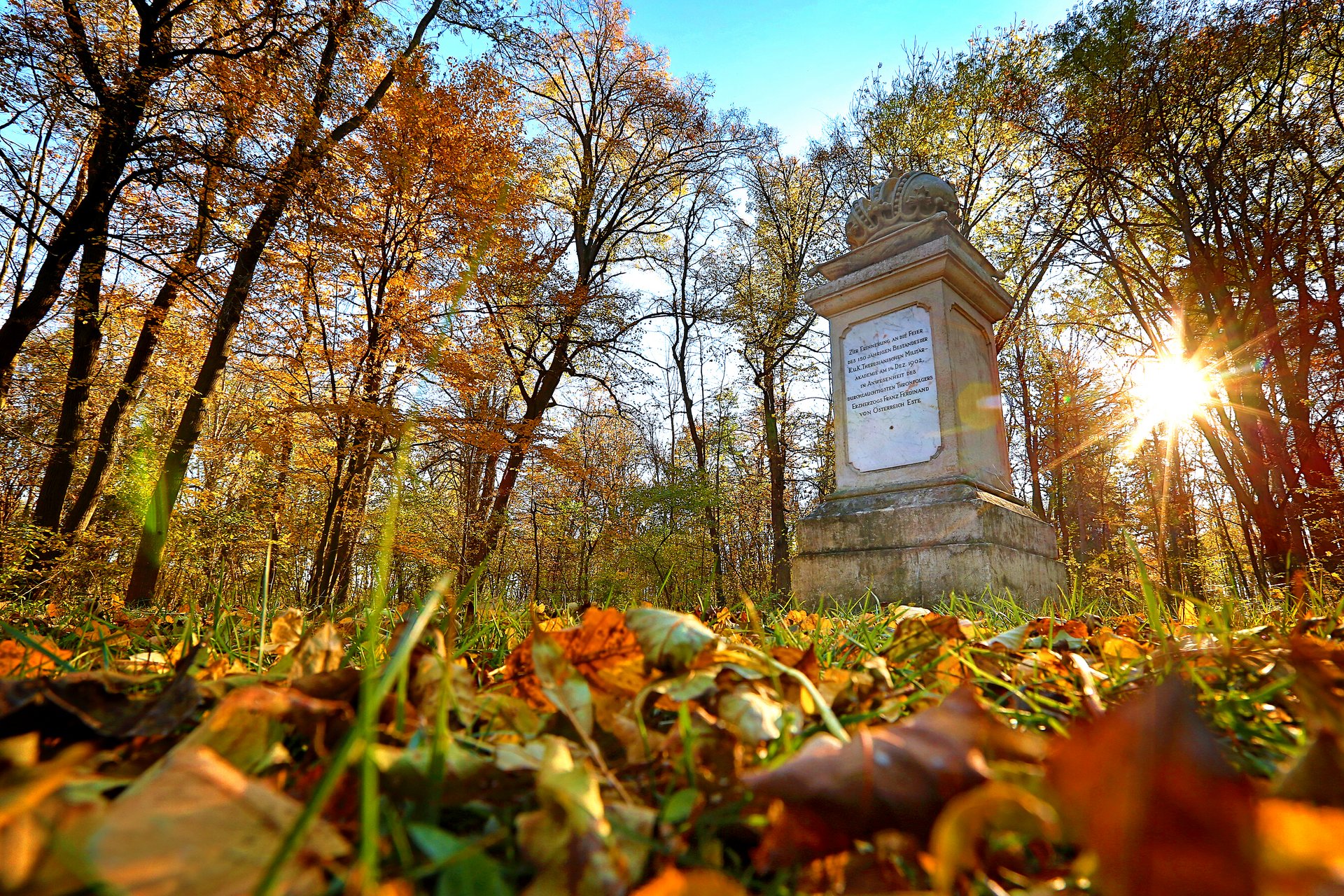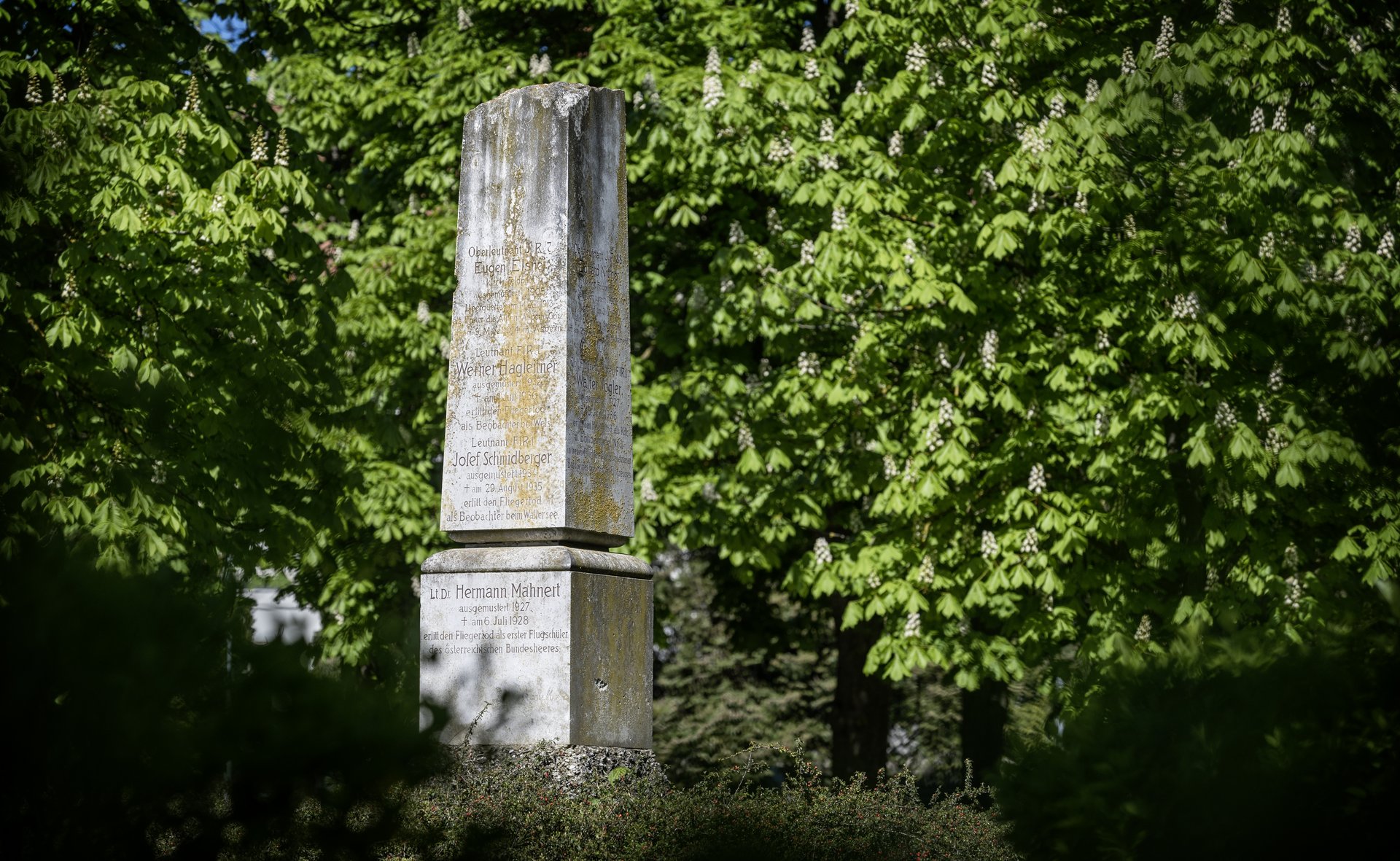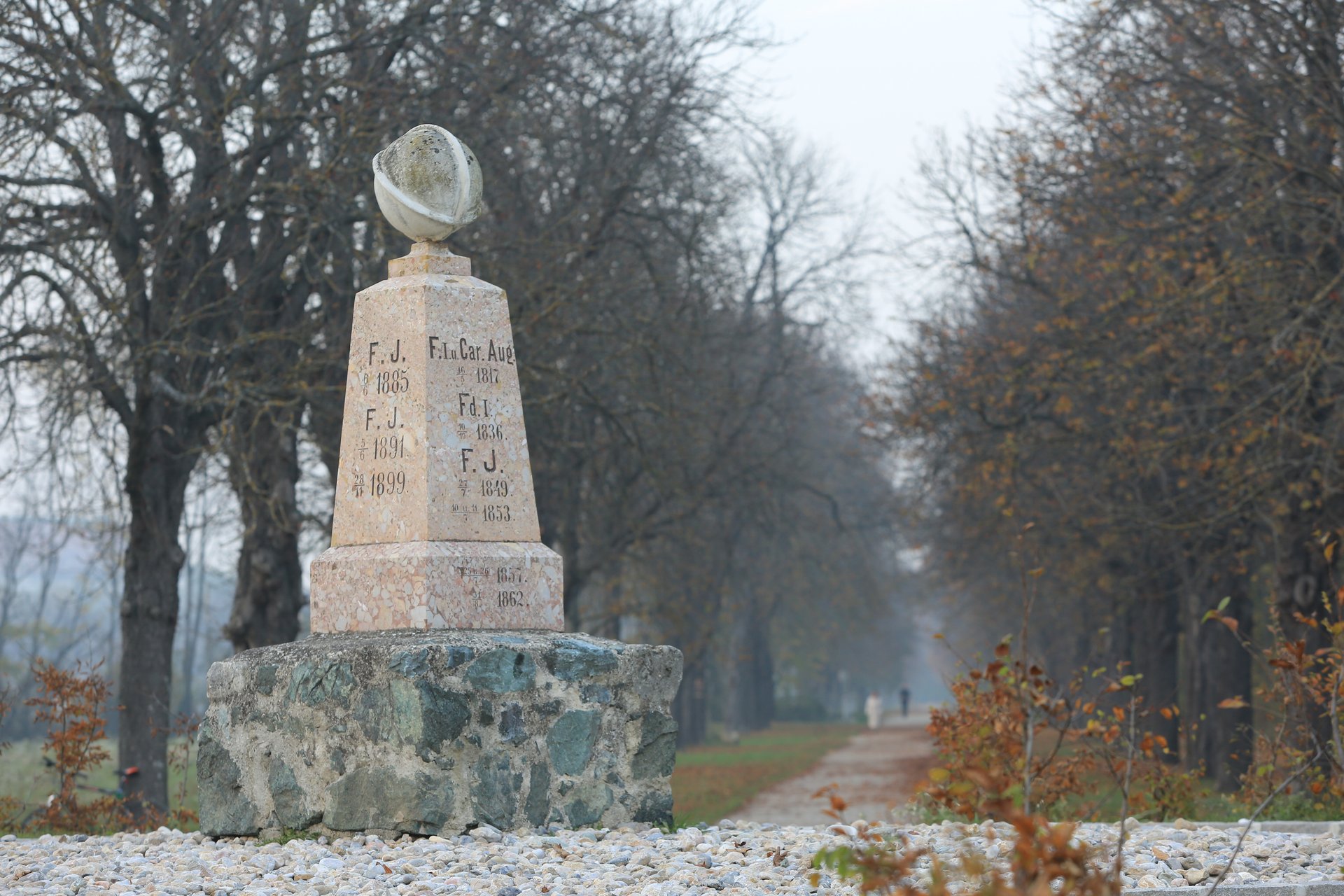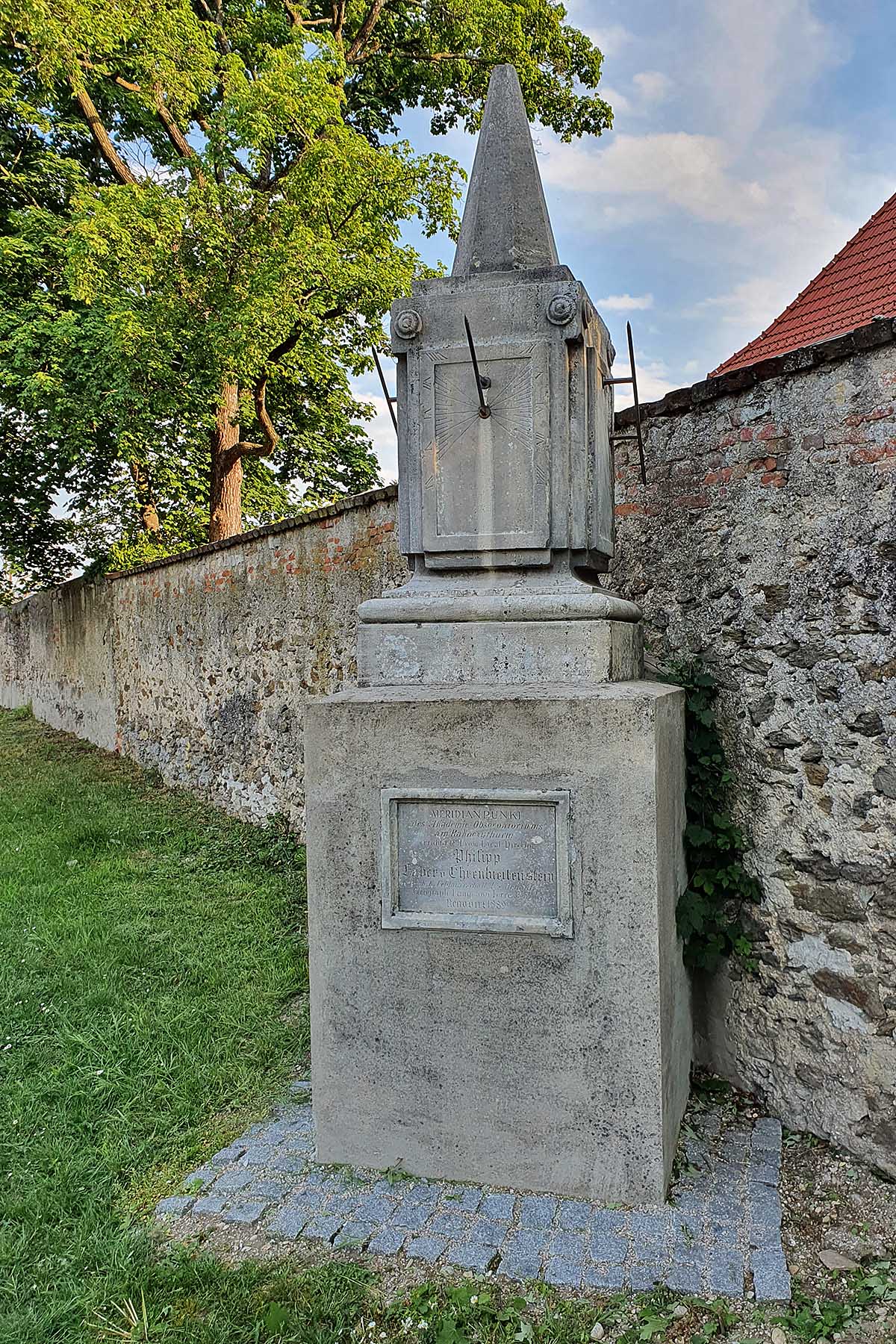If you walk through the extensive park, you can discover partly hidden monuments. Two persons were especially commemorated here: Maria Theresia as the founder of the Military Academy and Franz Joseph I. as the longest-reigning ruler of the Austrian-Hungarian Empire.
Maria Theresa Monument
Eyecatcher at the Theresan Square: The Maria Theresa Monument. Cast in bronze, the staue of the founding mother of the Theresan Military Academy is surrounded by four allegorical bronze figures: Religion, Justice, Prudence and Vigour.
The 3,83 meters high statue of Maria Theresia rests on a remarkable pedestal, made of polished granite. The Monument was dedicated on 31st of August, 1862.
Portrait Bust of Kinsky
A colossal bust of Count Kinsky commemorates the great reformer, who was in charge of the Theresan Military Academy from 1779 to 1805. His reforms imvolved the trainig of the cadets as well als the castle. The dedication of the monument took place on the 4th of October, 1830.
The class of 1994, which is named after Kinsky, had ercted a commemorative tablet with the names of all its class members on the occasion of their graduation. This tablet is located on the right side of the bust.
250 years of the Theresan Military Academy Memorial
The statue is postioned so that it is faced to Maria Theresa, in recognition of her role as Protectress and Supporter - a reference to the founder, whose idea of training officers has survived for 250 years. The monument was dedicated an pricesely the 250th anniversary of the founding day - on December 14th, 2002.
Emperor´s Monument
On top of an approximately 1,50 meters high grassy knoll rises a rock from which a bronze double-headed eagle is just about to lift off to fly.
The monument was unveiled on August 18th, 1908 on the occasion of the 60th anniversary of the reign of Francis Joseph I. The costs of erecting the monument were raised by the staff and the cadets of the Academy.
Monument to the 1400
This monument is located south of the main avenue opposite to the "Kaiserstein". The monument was unveiled on May 23, 1880. The monument originally displayed the names of the 300 graduates who had been killed in action between 1757 and 1880.
The names of the fallen graduates are chiseled on two marble plates, which are borderd by caryatides, and ordered chronologically as well as according to battles. The dedication is in the middle of the wall with the inscription "Treu bis in den Tod" (Loyal unto Death")
In 1927 the monument was expanded by the names of the 600 graduates fallen in World War I. In 1959 followed the addition of those 500 graduates who had been killed in the Second World War.
In total, the monument shows the names of 1400 graduates - that´s why the monument´s name.
Dietrich Monument
This obelisk-like monument is located at the crossing of the Fohlenhof Avenue and the small diagonal-avenue.
It´s a monument to honour of Feldzeugmeister Anton Freiherr of Dietrich, professor of applied strategy at the Academy from 1827 to 1845.
Engagement Stone
At the crossing of the Fohlenhof Avenue and the large intersection avenue, there is the so-calles hill of roses. On the top of it, there is a marble obelisk with a ball on the top which represents the noonday meridian.
At one time there used to be a "Gloriette" on that spot, where Maria Theresa is said to have become engaged to Francis of Lorraine in 1735.
The dates of imperial visits from 1765 to 1899 have been chiselled here.
Gnomon
The Gnomon is a device of the former Academy observatory in the Racoczy Tower. It´s therefore not a monument as it is commonly known.
The Gnomon is in the vicinity of the Fohlenhof farm and was erected in 1821. It was in direct line of sight of the observatory and was used for instruction of the cadets in mathematic geography. The obervatory existed until 1871. Today, the view from the Rakoczy Tower to the landmark is obstructed by trees.
